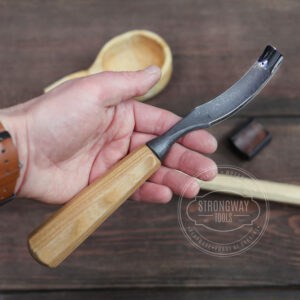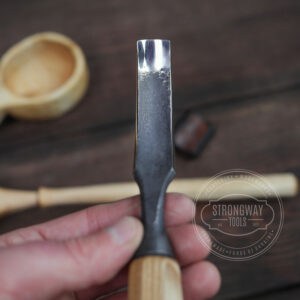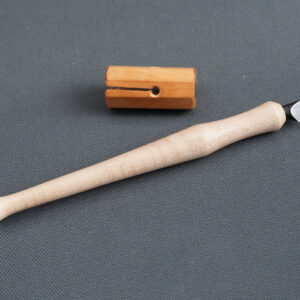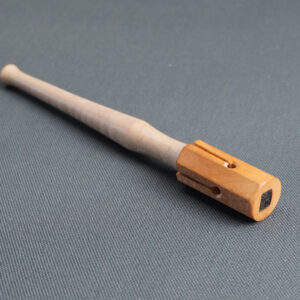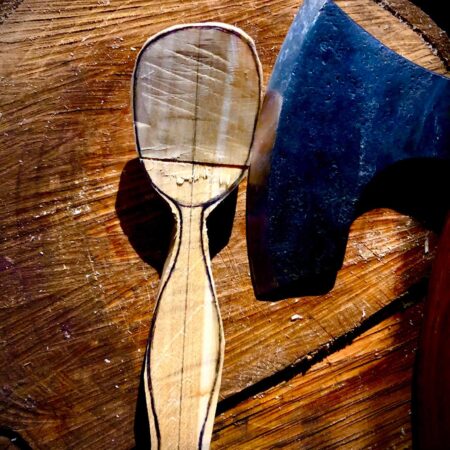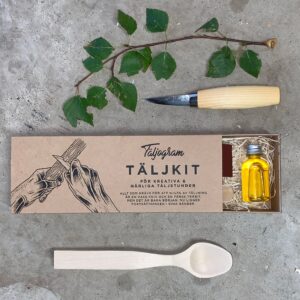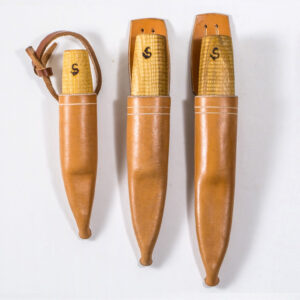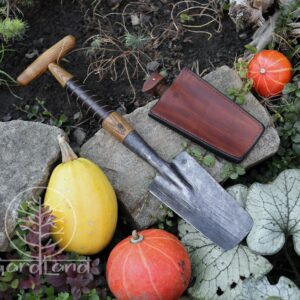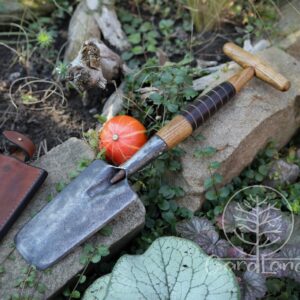The fingers method
1) Pour a little bit of oil into your hand and rub the oil into the spoon with your fingers.
2) Wipe off any excess oil with a piece of tissue.
3) Leave the spoon in a warm room for 24h.
The oven method
1) Pour a little bit of oil into your hands and rub the oil into the spoon with your fingers. Don’t wipe it.
2) Heat the oven to 50-100 degrees Celsius / 120-240 degrees Fahrenheit.
3) Place the spoon on a baking sheet and put in the oven for 5-10 minutes.
4) Take the spoon out of the oven and leave it in a warm room for 24h.
5) If the spoon looks patchy, rub a tiny bit of oil into the patches using your thumb.
The extra protection method for the tip of spoons
This method is useful for protecting the tip of spoons which may often be placed in cutlery drying racks. This method also works for treating the end of wooden chopping boards.
1) Heat up a little bit of oil in a cooking pot. Use a food thermometer to measure 130 decrees Celsius / 260 degrees Fahrenheit.
2) Dip the tip of the spoon in the oil.
3) Wipe off any excess oil with a tissue.
4) Leave the spoon in a warm room for 24h.
Recommended oil
Selder linseed oil.
Nils Stormlod is a Sloyd consultant who has researched 20-30 different oils in order to find the most suitable for treating carved spoons. He is a busy guy, on his way to pick up his child from nursery when I catch him for this interview.
How come you have researched so many oils?
When I did my Sloyd degree 20 years ago, everyone was of the opinion that raw linseed oil was the thing to use. No-one questioned anything but many people were disappointed because it didn’t dry, tasted bad and went rancid. When I became an independent sloyd consultant 5-6 years ago I took it upon myself to find the best oil. I bought and tested anything I could come across, interviewed people and read a ton of material. This is why I’m so vocal about it. I find that many people who are very vocal have in fact not tried very many different oils. Some people go to the super market and buy organic linseed oil for salads, but that is just pure nourishment for microorganisms, hence the opposite of what you actually need.
You recommend the Selder Linseed Oil. Why?
It’s completely clean – it doesn’t smell, it doesn’t taste anything, it dries quickly and it doesn’t change colour. It is made in the best way possible.
Isn’t the Selder oil cooked? And isn’t cooked linseed oil supposed to be bad somehow?
It is heated up as a last step of the refinement process in order to remove some of the water, but it doesn’t reach the boiling point for oils, so technically it’s actually not cooked.
But technicalities aside, the thing people are wary about when it comes to cooked oils in general is that traditionally heavy metals were added to the boiling process in order to get an oil with an acceptably low drying time, and these heavy metals were usually just left in the oils. Any kind of rusty garbage was thrown in back in the day…
This is not how the Selder oil is made however. They do add a catalyst which speeds up the process, but the catalyst itself is not consumed and is filtered out. The process it patented and it’s available for anyone to read.
Have you read the patent documents?
Yes, indeed.
Do you know the guys at Selder by the way?
Not really. I have gotten to know them a little during the years through my research, but I don’t know them personally.
Anything else you want to share with the readers?
I just think it’s important to keep in mind that all oils are made differently. The methods vary from country to country, and from product to product. I believe I have found the best one currently on the market, but I’m of course keeping an open mind in case I find something better going forward.


